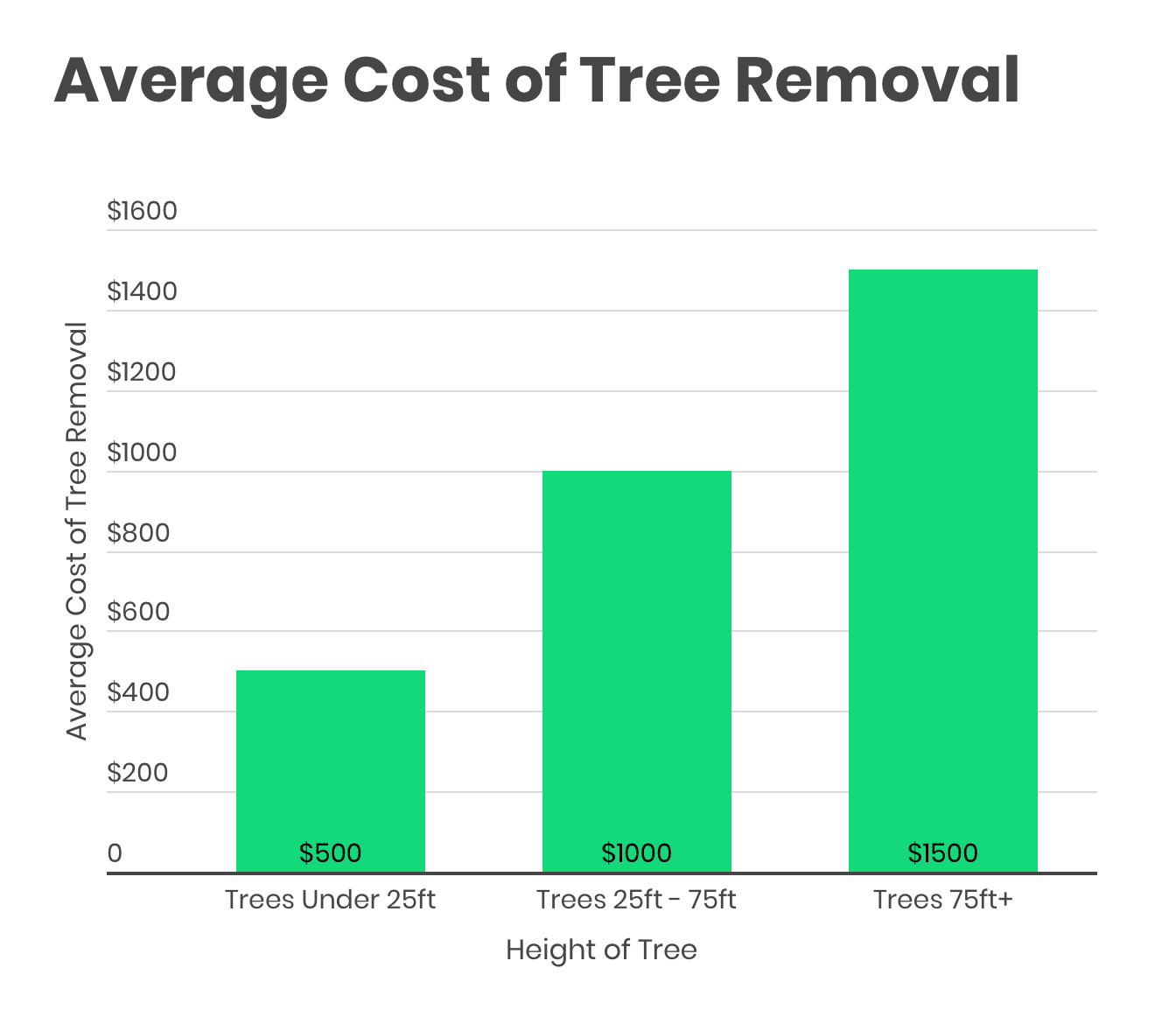Featured
Table of Contents
- – Latest Tree Cutting Pricing In Carolina Beach,...
- – What Impacts Tree Service Costs In Carolina Be...
- – Carolina Beach, NC Tree Removal: What To Budget
- – Carolina Beach, NC Arborist: Price Vs. Quality
- – Find Arborist Prices In Carolina Beach, NC
- – Additional Tree Trimming Service Plans In Car...
- – Residential Tree Trimming Costs In Carolina B...
- – Carolina Beach, NC Tree Clearing: Budget-Fri...
- – Curved Tree Clearing Costs In Carolina Beach...
- – Carolina Beach, NC Arborist vs DIY: Cost Ana...
- – Carolina Beach, NC Stump Removal Price Calcu...
- – Emergency Stump Grinding Prices In Carolina ...
- – Carolina Beach, NC Tree Removal Price Analysis
- – Carolina Beach, NC Tree Removal Cost FAQ
- – How To Save Money On An Stump Removal In Car...

The subsections listed below offer more comprehensive information about prices, consisting of an average range for each. TypeAverage Elimination CostPineConiferPalmMagnoliaArborvitaeAshCedarSweet GumEucalyptusSycamoreCypressOakMaplePoplar You can anticipate to pay between to get rid of a pine, depending on its size. Eliminating a pine is among the more cost effective jobs unless it is one that has been around for many years and is quite big.
Latest Tree Cutting Pricing In Carolina Beach, NC
Pines also have a tap root that grows deep into the soil, which can prove to be more hard to eliminate. The process itself includes an expert cutting the tree, clearing the base, cutting the surface roots, removing the stump, and lastly treating the soil. Without a professional hand, you run the risk of leaving pine seedlings behind, which will fall from the roots of distressed pines.
What Impacts Tree Service Costs In Carolina Beach, NC
The U.S. nationwide average for conifer elimination is roughly to have the conifer cut down, transported away, and the stump ground or eliminated totally. Conifers are normally much easier to eliminate, and despite the fact that they can grow quite high, they do not cost a fortune to eliminate. Conifers include pine, spruce, fir, and juniper trees.
Carolina Beach, NC Tree Removal: What To Budget
While conifers are stunning, they kill native plants and certain types of grass. This is because they need a lot of water and nutrients to survive, so they seep it off surrounding plants. They likewise have an expansive network of roots, which can impact your home's foundation. The average cost of palm elimination depends on the height as much as the type, ranging from.
Carolina Beach, NC Arborist: Price Vs. Quality
That is why it is very important to know which type you are getting rid of. While you do not need an herbicide to eliminate a palm tree, there are some actions your elimination specialist will have to require to ensure the task is done correctly. There are two ways they can get rid of them: by slicing them down or digging them up.
Find Arborist Prices In Carolina Beach, NC
From there, they get rid of the real tree and then the stump. Expect to pay between to eliminate this type of tree, depending on the exact size and details of the job.
Additional Tree Trimming Service Plans In Carolina Beach, NC
There are 3 types: green, white, and black ash. White ash is understood for its lots of colors. With its gray-tinged bark, its leaves are green or purple in the spring and golden yellow or purplish-red in the fall. They delight in moderate climates and great deals of sun. The green ash is named such due to its green or yellow foliage.
Residential Tree Trimming Costs In Carolina Beach, NC

Due to the variation in height, the elimination rate difference is large from. A coniferous, evergreen tree, the cedar is a hardy species.
Carolina Beach, NC Tree Clearing: Budget-Friendly Options
The development of false cedars varies from 50 feet up to 230 feet high. With star-shaped leaves and spectacular fall colors, the sweet gum is thought about a medium to large tree.
Curved Tree Clearing Costs In Carolina Beach, NC
It has a big root base of 40 to 50 feet, which impacts the elimination expense. Typically, it costs between to eliminate a eucalyptus. Eucalyptus are not typical everywhere, however they are rather large compared to others, which is why even the smaller sized ones are so pricey to eliminate. Initially from Australia, eucalyptus are intrusive plants that grow in thick groves that secure native plants.
Carolina Beach, NC Arborist vs DIY: Cost Analysis
There are a handful of methods to do this, consisting of burning, pulling, grinding, or killing them with herbicide. Expect to pay in between to get rid of sycamores, based upon the height, trunk size, and amount of work included. Sycamores are among the largest hardwood trees, usually varying from 60 to 100 feet tall and as wide as 15 feet.
Carolina Beach, NC Stump Removal Price Calculator
The first two actions will expose the insides of the tree and cut off the flow of nutrients up the trunk. From there, an expert applies herbicide to eliminate the tree and cuts down the trunk.
Emergency Stump Grinding Prices In Carolina Beach, NC
There are various kinds of Cypress trees, but the most prevalent are the Leyland, Arizona, Bald, and Italian. The Bald Cypress grows in swampy or really damp locations while the others delight in a dry, warm, or hot environment (tree trimming). They can grow as tall as 80 to 100 feet tall
Carolina Beach, NC Tree Removal Price Analysis

Prone to illness, the Cypress is among the most treasured woods for furnishings. The average oak grows to around 60 feet, and depending on the complexity of the removal, it costs an average of to eliminate. The precise size of your oak and the effort required to fell it impact what you will really spend for removal in addition to any additional services like stump grinding.
Carolina Beach, NC Tree Removal Cost FAQ
Access to the trees and the roots will also impact the overall cost. Maples can quickly mature to 100 feet or more and typically expense between to get rid of from your property. The final cost depends on the real height and intricacy of the task. Maples are generally among the more expensive trees to eliminate due to the fact that of their size and the work involved in the elimination.
How To Save Money On An Stump Removal In Carolina Beach, NC
Poplars are giants of the species. Growing as high as 90 to 115 feet, these enormous lumbers are mainly discovered in North America and consist of the aspen, cottonwood, and balsam trees. Boasting an extensive root system, poplars can be expensive to eliminate when fully grown. The procedure to remove trees involves all the trimming and cutting of the branches and trunk, bringing it down to a stump.
Table of Contents
- – Latest Tree Cutting Pricing In Carolina Beach,...
- – What Impacts Tree Service Costs In Carolina Be...
- – Carolina Beach, NC Tree Removal: What To Budget
- – Carolina Beach, NC Arborist: Price Vs. Quality
- – Find Arborist Prices In Carolina Beach, NC
- – Additional Tree Trimming Service Plans In Car...
- – Residential Tree Trimming Costs In Carolina B...
- – Carolina Beach, NC Tree Clearing: Budget-Fri...
- – Curved Tree Clearing Costs In Carolina Beach...
- – Carolina Beach, NC Arborist vs DIY: Cost Ana...
- – Carolina Beach, NC Stump Removal Price Calcu...
- – Emergency Stump Grinding Prices In Carolina ...
- – Carolina Beach, NC Tree Removal Price Analysis
- – Carolina Beach, NC Tree Removal Cost FAQ
- – How To Save Money On An Stump Removal In Car...
Latest Posts
Cameron Park, TX Tree Clearing Exchange Programs: Costs
Eagle Point, OR Tree Trimming Reviews: Are They Worth It?
Kenilworth, NJ Arborist Reviews And Pricing
More
Latest Posts
Cameron Park, TX Tree Clearing Exchange Programs: Costs
Eagle Point, OR Tree Trimming Reviews: Are They Worth It?
Kenilworth, NJ Arborist Reviews And Pricing